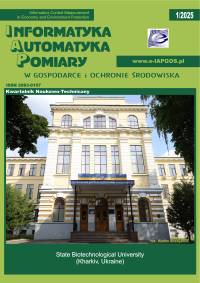WALIDACJA TRÓJWYMIAROWEGO FANTOMU GŁOWY DLA DANYCH OBRAZOWYCH
Jolanta Podolszańska
jolanta.podolszanska@outlook.comPolitechnika Częstochowska (Polska)
https://orcid.org/0000-0002-6032-5654
Abstrakt
W artykule przedstawiono wyniki badań nad projektem trójwymiarowego fantomu głowy do projekcji wiązki stożkowej. Model głowy jest oparty na matematycznym modelu głowy Shepp-Logan, który jest używany do symulacji działania skanera CT. Model jest następnie porównywany z danymi referencyjnymi pod kątem podobieństwa strukturalnego, rozumowania i kształtu. Badane są parametry geometryczne uzyskanych obrazów. Zrekonstruowany obraz jest analizowany przy użyciu metody FDK. Wyniki pokazują, że parametry geometryczne mają bezpośredni związek z liczbą projekcji. Przedstawiono matematyczne ramy rekonstrukcji 3D wiązki stożkowej za pomocą pierwszej pochodnej transformaty radonowej.
Słowa kluczowe:
tomografia komputerowa, rekonstrukcja FDK, trójwymiarowy matematyczny model fantomu, fantom Shepp-LoganBibliografia
Batur A. et al.: Hounsfield unit density in the characterization of bile duct lesions. Polish Journal of Radiology 84, 2019, 397–401.
DOI: https://doi.org/10.5114/pjr.2019.89390
Google Scholar
Dzierżak R., et al.: The influence of the normalization of spinal CT images on the significance of textural features in identifying defects in the spongy tissue structure. Innovations in Biomedical Engineering. Springer International Publishing, 2019.
DOI: https://doi.org/10.1007/978-3-030-15472-1_7
Google Scholar
Hansen P. C. et al.: Computed tomography: algorithms, insight, and just enough theory. Society for Industrial and Applied Mathematics, 2021.
DOI: https://doi.org/10.1137/1.9781611976670
Google Scholar
Ilmavirta J., Monkkonen K.: X-ray tomography of one-forms with partial data. SIAM Journal on Mathematical Analysis 53(3), 2021, 3002–3015.
DOI: https://doi.org/10.1137/20M1344779
Google Scholar
Panetta D., Camarlinghi N.: 3D Image Reconstruction for CT and PET: A Practical Guide with Python. CRC Press 2020, 65–73.
DOI: https://doi.org/10.1201/9780429270239
Google Scholar
Senchukova A.: Learned image reconstruction in X-ray computed tomography, 2020.
Google Scholar
Sun W. et al.: Review of high energy x-ray computed tomography for non-destructive dimensional metrology of large metallic advanced manufactured components. Reports on Progress in Physics 85(1), 2022, 016102.
DOI: https://doi.org/10.1088/1361-6633/ac43f6
Google Scholar
Tadeusiewicz R.: Komputerowe systemy wizyjne w zastosowaniach przemysłowych. Utrzymanie Ruchu 3, 2019, 14–21.
Google Scholar
Withers P. J. et al.: X-ray computed tomography. Nature Reviews Methods Primers 1(1), 2021, 18.
DOI: https://doi.org/10.1038/s43586-021-00015-4
Google Scholar
Xu X. et al.: Review of electromagnetic vibration in electrical machines. Energies 11(7), 2018, 1779.
DOI: https://doi.org/10.3390/en11071779
Google Scholar
Zuo C. et al.: Transport of intensity equation: a tutorial. Optics and Lasers in Engineering 135, 2020, 106187.
DOI: https://doi.org/10.1016/j.optlaseng.2020.106187
Google Scholar
Autorzy
Jolanta Podolszańskajolanta.podolszanska@outlook.com
Politechnika Częstochowska Polska
https://orcid.org/0000-0002-6032-5654
Statystyki
Abstract views: 177PDF downloads: 142
Licencja

Utwór dostępny jest na licencji Creative Commons Uznanie autorstwa – Na tych samych warunkach 4.0 Miedzynarodowe.









